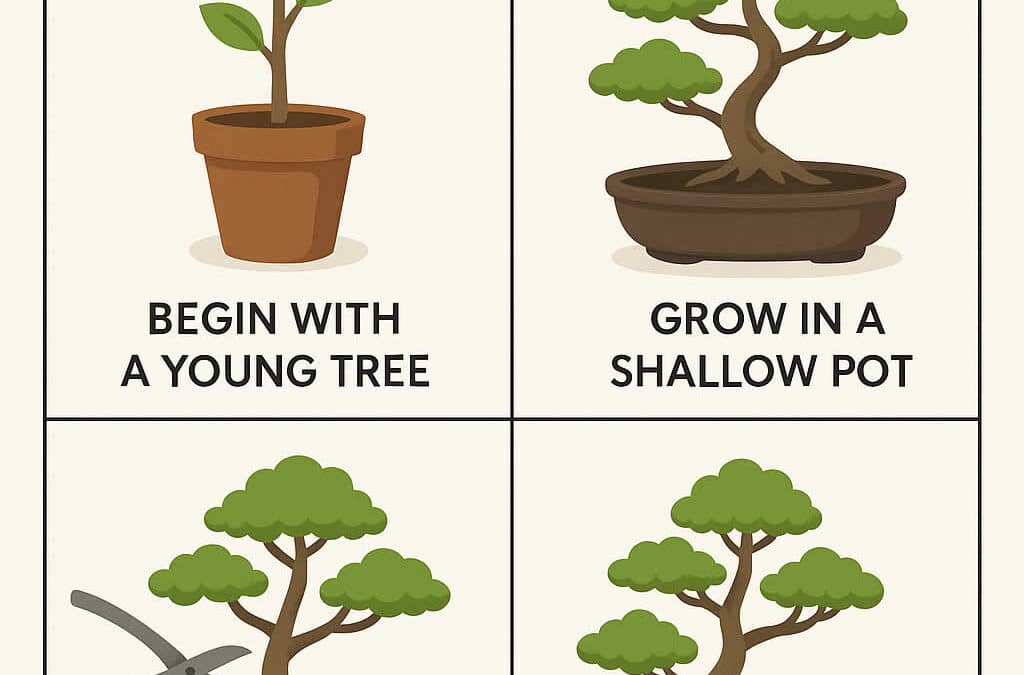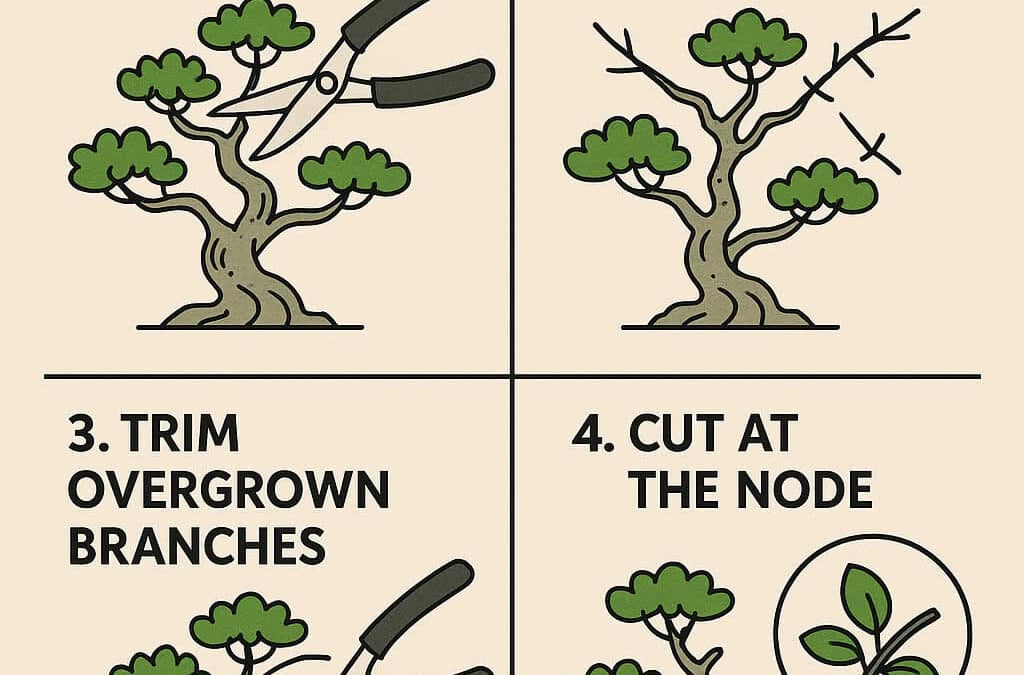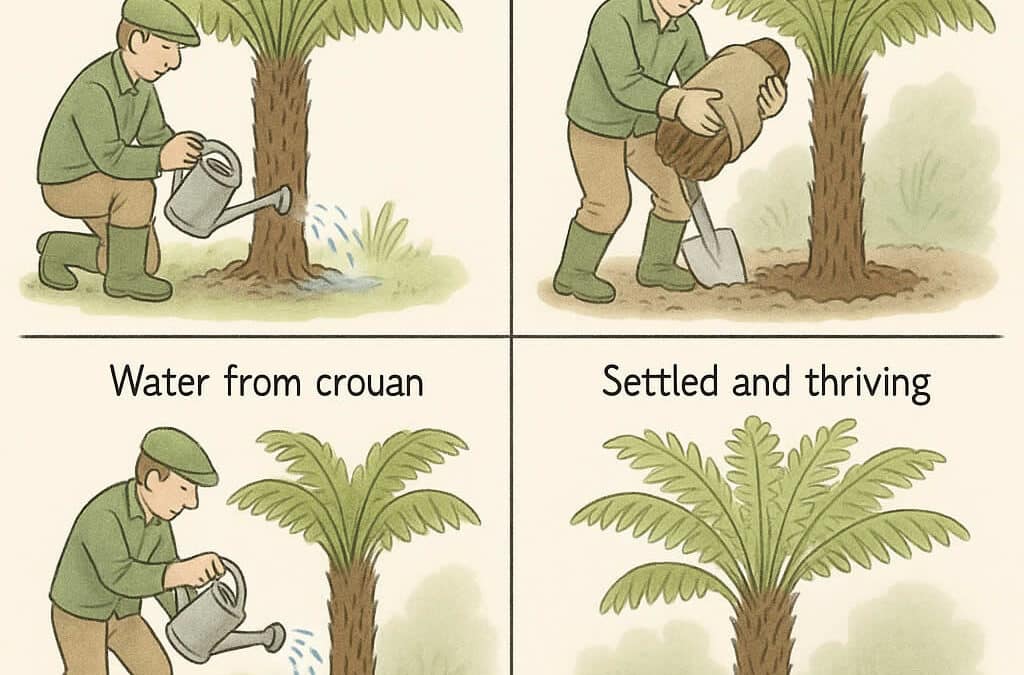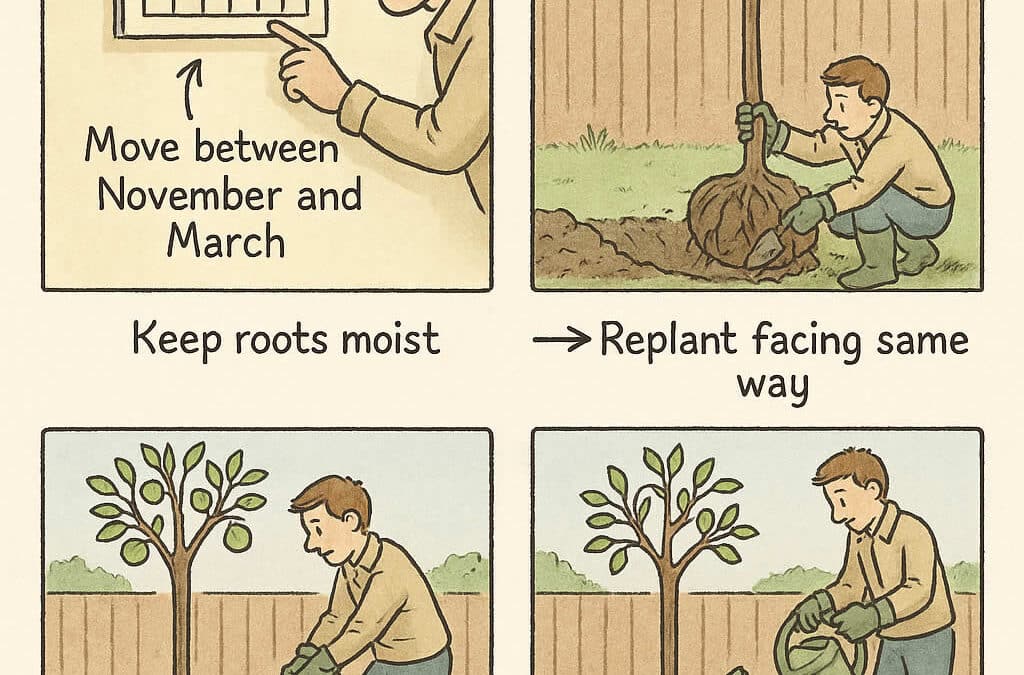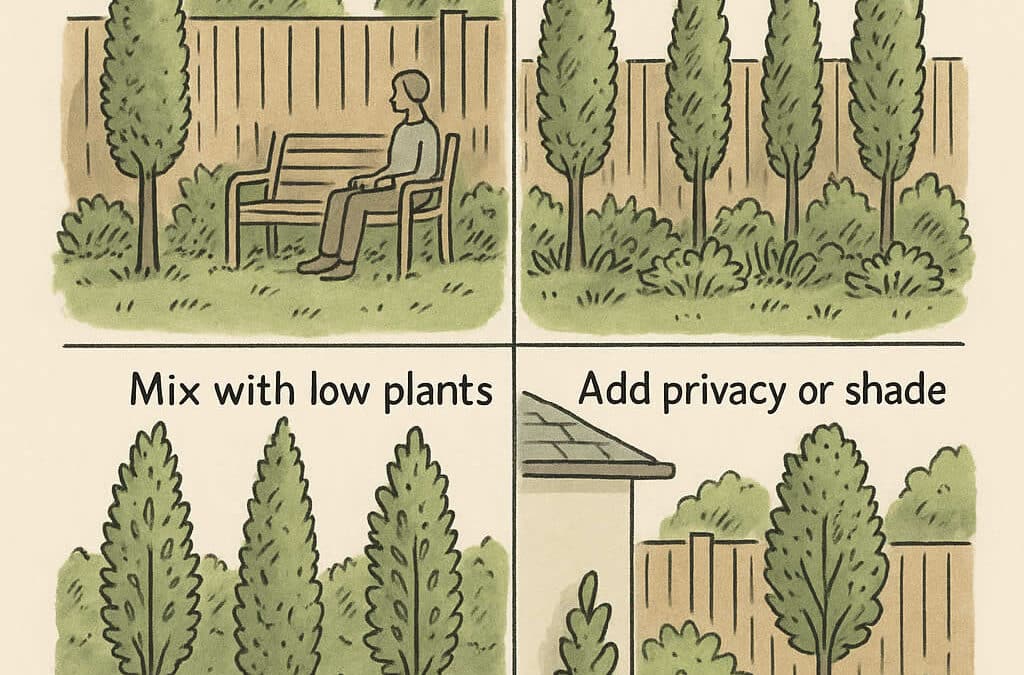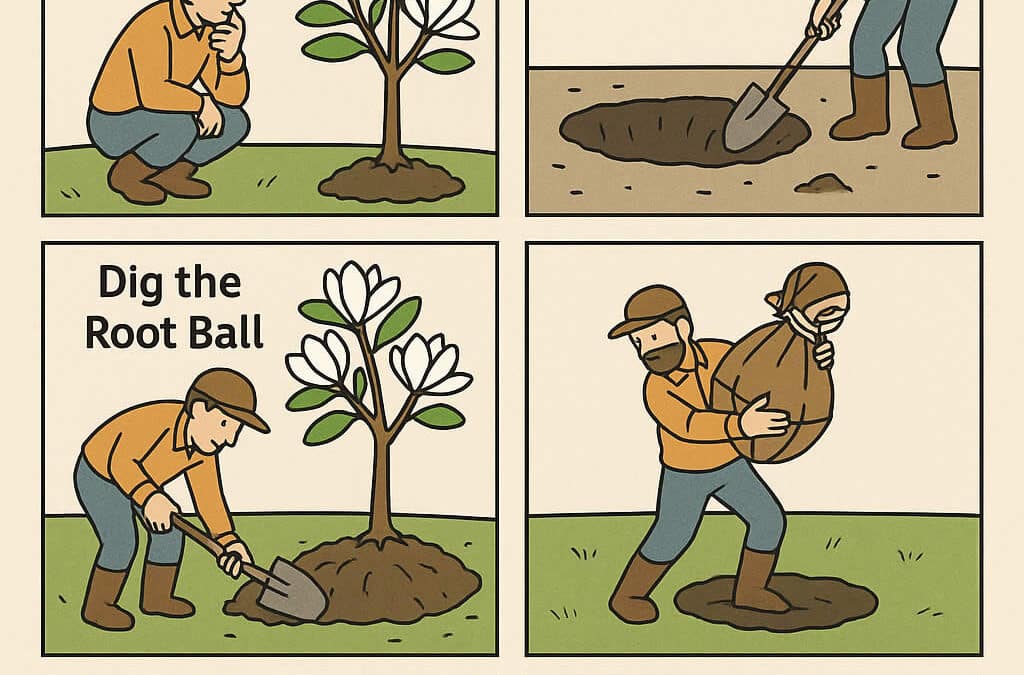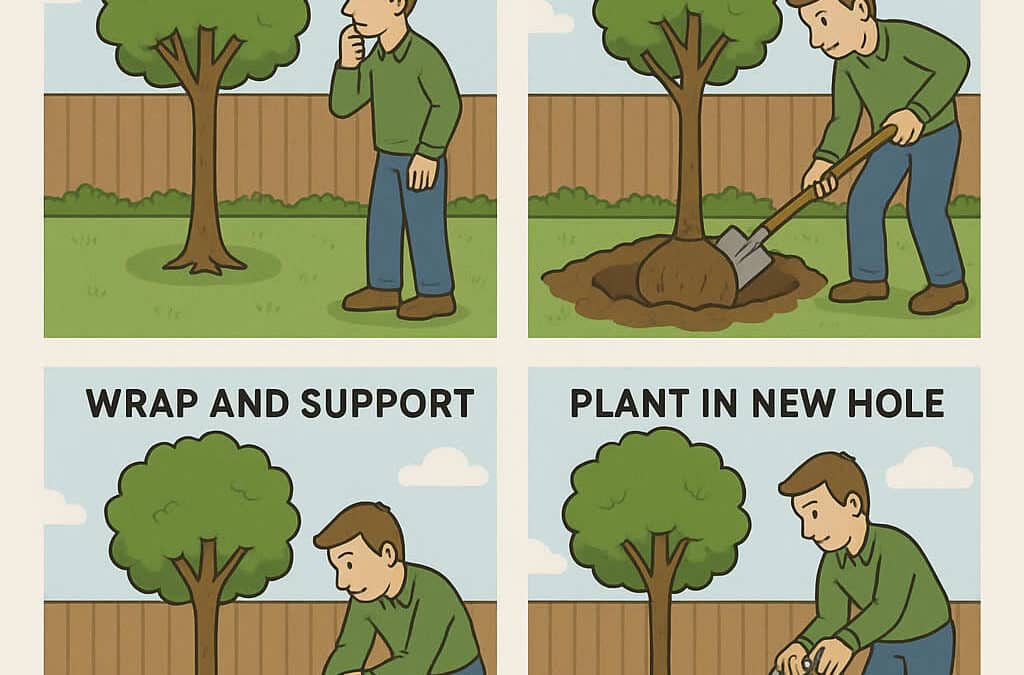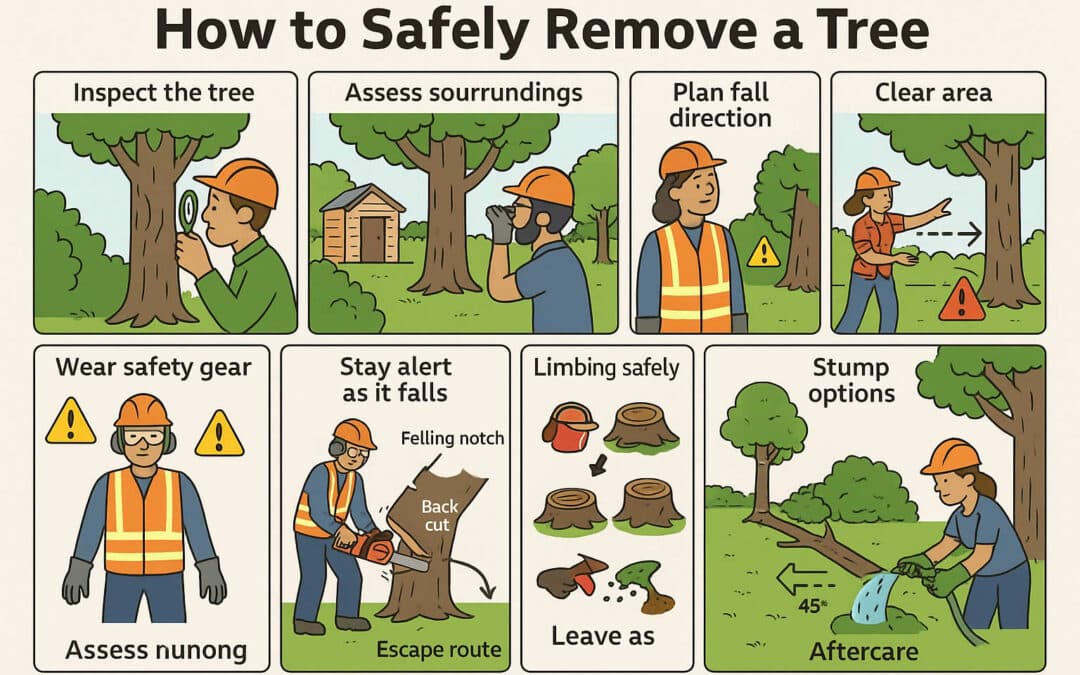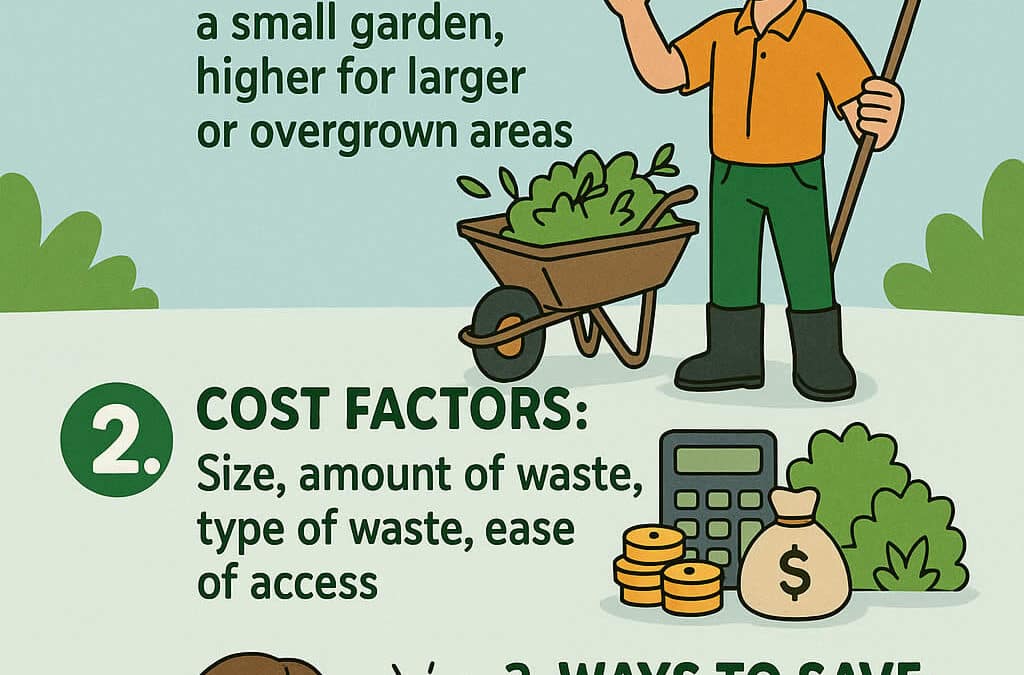If you’ve ever walked through a woodland and noticed the tall, narrow trees with needle-like leaves, you’ve probably been around conifers. You might not have known the name, but you’ll have seen them. Conifer trees are all around us – in parks, forests, gardens, and hedgerows. They grow tall, stay green all year round, and have a very different feel compared to broadleaf trees like oaks or maples. In this post, you’ll find out exactly what conifers are, how they grow, and what makes them different.Let’s take it step by step and really
get to know conifer trees.
What does “conifer” actually mean?
The word “conifer” comes from Latin and basically means “cone-bearing.” That’s your first clue about what sets these trees apart. Unlike most other trees, conifers produce cones instead of flowers. These cones carry their seeds, and they come in all sorts of shapes and sizes depending on the species.Conifers are part of a group of plants known as gymnosperms, which means they have “naked seeds.” That just means the seeds develop on the surface of scales or cones, not inside a fruit like they do in apple or cherry trees. So, if you see a tree with cones – especially one with needles or scales instead of broad leaves – you’re probably looking at a conifer.
What do conifer trees look like?
You can usually spot a conifer by its shape and leaves. Most conifers have a tall, triangular shape, which helps them shed snow in winter and lets light reach all the way down to their lower branches. This shape makes them quite wind-resistant as well, which is why they’re often used in hedges and windbreaks.
| Leaf Type | Description | Examples |
|---|
| Needles | Long, thin leaves | Pine, Spruce, Fir |
| Scales | Short, overlapping leaves | Leylandii, Cedar |
These types of leaves help conifers keep moisture in and survive tough conditions. That’s one of the reasons why conifers tend to grow well in poor soils or cold climates.
Are all conifers evergreen?
Most of the time, yes. Conifers are usually evergreen, which means they keep their leaves all year round. That’s why they stay green even through winter when other trees have dropped their leaves.But not always. There are exceptions. For example, the larch is a deciduous conifer – it loses its needles in the autumn. So while most conifers stay green, you do get a few that don’t.
Where do conifer trees grow?
Conifers grow all over the world, but they do best in cooler parts of the northern hemisphere. You’ll find them across the UK, Europe, North America, and large parts of Asia. Some species are adapted to mountain slopes, some to sandy soils, and others to wet, boggy areas.In the UK, you often see conifers planted in managed forests, parks, and large gardens. They’re also popular for hedges – leylandii and yew are both common choices. People use them for privacy, shelter, and their year-round greenery.
What types of conifer trees are there?
| Tree | Features |
|---|
| Pine (Pinus) | Long needles, large cones, tall and straight |
| Spruce (Picea) | Sharp needles, smaller cones, used for timber and Christmas trees |
| Fir (Abies) | Softer needles, also popular Christmas trees |
| Cedar (Cedrus) | Scale-like needles, wide-spreading branches, aromatic |
| Yew (Taxus) | Dark green needles, slow-growing, extremely long-lived |
| Leylandii | Fast-growing hybrid, common in hedges |
Why do people plant conifer trees?
| Reason | Benefit |
|---|
| Fast growth | Creates dense screens quickly |
| Evergreen | Stays green all year round |
| Prunable | Can be trimmed to fit most spaces |
| Low maintenance | Hardy once established |
Fast-growing types like leylandii can get out of hand if you don’t keep them trimmed regularly. So if you plant one of those, you’ll need to stay on top of it.
How do conifers reproduce?
| Cone Type | Function |
|---|
| Male cones | Release pollen |
| Female cones | Carry and develop seeds |
The wind carries the pollen from male to female cones. Once the pollen reaches a female cone, the seeds develop. When ready, the cone opens and the wind spreads them to new places.
Are conifer trees good for wildlife?
Yes, they’re great for a lot of wildlife – especially in places where broadleaf trees aren’t common. Birds like crossbills and coal tits feed on the seeds from the cones. Red squirrels also depend on conifer woods in some parts of the UK.The thick branches offer shelter for nesting birds. And the cover they provide in winter can help animals survive bad weather. But it’s worth saying that not all conifer woods are the same.
Plantations of fast-growing conifers like sitka spruce don’t support as much wildlife as native woods do. They often create dark, shaded environments where only a few types of plants and animals can live.
Do conifers need special care?
| Aspect | Guidance |
|---|
| Watering | Water regularly when young, especially in dry spells |
| Trimming | Trim hedges once or twice a year to keep them neat |
| Spacing | Give enough space to reduce light/water competition |
| Soil | Prefers well-drained soil to avoid root rot |
Can you grow conifers in containers?
Yes, you can, but it depends on the species. Smaller types like dwarf pines or slow-growing yews work best in pots. You’ll need to make sure the container drains well, and you’ll probably have to water more often – pots dry out quicker than soil in the ground.You might also need to feed them once in a while with a slow-release fertiliser. Keep the pot somewhere that gets light but doesn’t dry out too much, and they’ll do fine.
What’s the environmental impact of planting conifers?
It depends how and where they’re planted. Conifer trees absorb carbon dioxide, just like all trees do, so they’re helpful in the fight against climate change. They also help with soil stabilisation and can reduce noise and wind if planted in the right place.But if they’re planted in large blocks, especially in peatland or areas meant for native woodland, they can change the local environment too much. That’s why there’s been a shift in recent years towards planting more mixed woods – blending conifers with broadleaf trees to get the best of both.
How long do conifers live?
That really varies. Some fast-growing conifers like leylandii might live for around 30 to 40 years, while slow-growing ones like yew can live for hundreds – even thousands – of years. In fact, some yew trees in the UK are believed to be over 1,000 years old.So if you’re planting a conifer, it’s worth thinking ahead. How big will it get? How long will it last? Will it outgrow the space? These are the sorts of questions you need to ask.
Should you choose a conifer for your garden?
It depends on what you want from your space. If you’re after year-round greenery, privacy, or a windbreak, conifers are a solid choice. If you pick the right species and keep it trimmed, it can be a beautiful and functional part of your garden.But be careful. Some conifers can get very big, very fast. That’s fine in a big field, but not great next to a small patio or in front of a window. Think about the long-term height, width, and light levels before you plant one.
Final thoughts
Conifer trees are more than just the evergreens you see in Christmas displays or dark pine forests. They’re a diverse and ancient group of trees with loads of practical uses and a quiet beauty that lasts all year. Whether you’re walking through a forest or planning your garden, understanding conifers helps you make better choices – for wildlife, for the landscape, and for your own space.Take your time when choosing a conifer. Read the label, look at the mature height, and picture it in five or ten years. If you give them the right space and a bit of care, they’ll give back in greenery, structure, and shelter for a very long time.
Let them grow with purpose, and they’ll reward you with presence.
Tree Surgeon Tividale – Tree Surgeon Coven Heath – Tree Surgeon Hinksford


